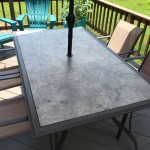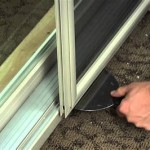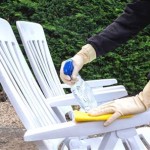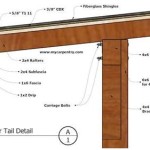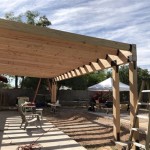Stone Top Patio Table: Durability and Style for Outdoor Living
A stone top patio table offers a compelling combination of durability and aesthetic appeal for outdoor spaces. Unlike tables constructed from wood, plastic, or metal alone, stone tops provide superior resistance to weathering and wear, contributing to a longer lifespan and sustained visual allure. The selection of a stone top patio table warrants consideration of the various stone types available, the maintenance requirements associated with each, and the overall design integration with the surrounding outdoor environment. This article will explore the advantages of stone top patio tables, delve into common stone materials used in their construction, and outline essential maintenance practices to ensure their longevity.
Advantages of Stone Top Patio Tables
The decision to invest in a stone top patio table is often driven by the numerous advantages it offers over alternative materials. The inherent strength of stone, coupled with its natural beauty, makes it a desirable option for outdoor furniture.
Exceptional Durability: Stone, by its very nature, is a robust material capable of withstanding the elements. Unlike wood, which can warp, rot, or splinter under prolonged exposure to moisture, stone remains largely unaffected by rain, snow, and humidity. Similarly, plastic can become brittle and fade with prolonged exposure to sunlight, while some metals are susceptible to rust. Stone, however, resists these common forms of degradation. This inherent durability translates to a longer lifespan for the table, reducing the need for frequent replacement.
Furthermore, stone is highly resistant to scratches and dents. Everyday use, such as placing items on the table or accidental impacts, is less likely to cause significant damage compared to softer materials. This makes stone top patio tables ideal for high-traffic outdoor areas where they are subject to frequent use.
Weather Resistance: Patio tables are often exposed to a wide range of weather conditions. Stone stands up remarkably well under these circumstances. It is resistant to fading from UV exposure, unlike many plastics and some painted metals. It also weathers temperature fluctuations better than many materials. The expansion and contraction caused by changing temperatures can lead to cracks and weakening in some table top materials, but stone is particularly resilient to such damage.
Aesthetic Appeal: Stone adds a touch of natural elegance to any outdoor setting. The unique veining and texture of each stone slab create a visually appealing surface that complements a variety of architectural styles. From the rustic charm of slate to the sophisticated sheen of granite, there is a stone type to suit diverse aesthetic preferences.
The visual appeal of stone is not only inherent but also enduring. The natural color and pattern of the stone are unlikely to fade significantly over time, ensuring that the table maintains its aesthetic value for years to come. This is in contrast to painted or stained surfaces, which may require periodic refinishing to maintain their appearance.
Low Maintenance: While some stone types require sealing to protect against stains, the overall maintenance requirements for stone top patio tables are relatively low. Regular cleaning with mild soap and water is typically sufficient to keep the surface looking its best. This simple maintenance routine eliminates the need for specialized cleaning products or treatments.
Unlike wood, stone does not require periodic sanding, staining, or sealing to prevent deterioration. Similarly, metal tables may require rust prevention treatments. The low maintenance nature of stone makes it a practical choice for individuals who prefer to spend more time enjoying their outdoor spaces and less time on upkeep.
Increased Value: A stone top patio table can add value to a property. Its durability and aesthetic appeal contribute to a sense of quality and permanence. Potential homebuyers often perceive stone as a high-end material, making it a desirable feature for outdoor living spaces.
This increased value is not only monetary but also experiential. A well-maintained stone top patio table provides a comfortable and inviting space for outdoor dining, entertaining, and relaxation, enhancing the overall enjoyment of the property.
Common Stone Materials Used in Patio Tables
The choice of stone material for a patio table top significantly impacts its appearance, durability, and maintenance requirements. Each type of stone possesses unique characteristics that make it suitable for different outdoor environments and lifestyles.
Granite: Granite is a popular choice for patio tables due to its exceptional durability and resistance to staining and scratching. It is an igneous rock formed from the slow cooling of magma beneath the Earth's surface. This slow cooling process results in a dense, hard material that is highly resistant to weathering.
Granite is available in a wide range of colors and patterns, from light grays and whites to deep blacks and reds. Its natural variations add visual interest and ensure that each table is unique. Granite is relatively non-porous, making it resistant to staining from spills and food. It requires sealing to protect against moisture absorption and potential damage from freezing and thawing in colder climates. Periodic cleaning with mild soap and water is sufficient to maintain its appearance.
Marble: Marble exudes elegance and sophistication, making it a desirable option for upscale outdoor settings. It is a metamorphic rock formed from the recrystallization of limestone or dolomite. Marble is known for its distinctive veining and smooth, polished surface.
While marble is visually stunning, it is more porous than granite and requires more diligent sealing to prevent staining. It is also susceptible to etching from acidic substances, such as lemon juice or vinegar. Therefore, marble is best suited for covered patios or areas where spills can be promptly cleaned. Regular cleaning with pH-neutral cleaners is essential to maintain its luster.
Slate: Slate is a fine-grained metamorphic rock known for its durability and natural cleft texture. It is formed from the compression of shale or mudstone. Slate is naturally water-resistant and highly resistant to staining. Its color typically ranges from dark gray to black, although variations in green, purple, and red may also occur.
Slate's natural cleft texture provides a non-slip surface, making it a practical choice for outdoor dining areas. It requires minimal maintenance, typically only needing cleaning with mild soap and water. While slate is durable, it can be prone to chipping along the edges, so it is important to handle it with care.
Limestone: Limestone is a sedimentary rock composed primarily of calcium carbonate. Its color typically ranges from light tan to gray, and it often contains fossils and other organic materials. Limestone is a relatively soft stone compared to granite and marble, making it more susceptible to scratching and staining.
Limestone requires regular sealing to protect against moisture absorption and staining. It is also vulnerable to acid rain and other environmental pollutants. Therefore, limestone is best suited for mild climates with low levels of air pollution. Regular cleaning with pH-neutral cleaners is essential to maintain its appearance.
Soapstone: Soapstone is a metamorphic rock composed primarily of talc. It has a smooth, soapy feel and is known for its heat resistance and non-porous nature. Soapstone is typically dark gray or green in color and develops a patina over time.
Soapstone is highly resistant to stains and scratches, making it a practical choice for high-use outdoor areas. It requires minimal maintenance, typically only needing occasional waxing or oiling to enhance its patina. Its heat resistance makes it ideal for use near outdoor fireplaces or grills.
Maintenance Practices for Stone Top Patio Tables
Proper maintenance is crucial for preserving the beauty and extending the lifespan of a stone top patio table. The specific maintenance requirements vary depending on the type of stone and the environmental conditions to which it is exposed.
Regular Cleaning: Regular cleaning is essential to remove dirt, debris, and spills that can stain or damage the stone surface. The frequency of cleaning depends on the usage and exposure to the elements. For most stone types, cleaning with mild soap and water is sufficient. Avoid using harsh chemicals, abrasive cleaners, or scouring pads, as these can damage the stone surface.
For stubborn stains, use a poultice made from baking soda and water. Apply the poultice to the stain, cover it with plastic wrap, and let it sit for several hours or overnight. Then, rinse the area with clean water and dry with a soft cloth.
Sealing: Sealing is an important step in protecting porous stone types, such as marble, limestone, and slate, from staining and moisture absorption. The frequency of sealing depends on the type of stone and the sealant used. Follow the manufacturer's instructions for proper application.
Before sealing, ensure that the stone surface is clean and dry. Apply the sealant evenly using a brush, roller, or sprayer. Allow the sealant to penetrate the stone according to the manufacturer's instructions. Wipe off any excess sealant with a clean cloth. Allow the sealant to cure completely before using the table.
Protection from the Elements: While stone is generally durable, it is still susceptible to damage from extreme weather conditions. In colder climates, protect the table by covering it with a waterproof cover or storing it indoors during the winter months. This will prevent damage from freezing and thawing, which can cause cracks and weakening of the stone.
In areas with intense sunlight, consider using a UV-resistant sealant to prevent fading. Also, consider positioning the table in a shaded area or using an umbrella to provide additional protection from the sun.
Prompt Spill Cleanup: Promptly clean up any spills to prevent staining. Blot up spills immediately with a clean cloth. Avoid rubbing, which can spread the stain. For acidic spills, such as lemon juice or vinegar, neutralize the area with baking soda before cleaning.
Avoid Dragging Heavy Objects: Avoid dragging heavy objects across the stone surface, as this can cause scratches and dents. Use coasters or placemats under dishes and glasses to protect the surface from scratches and spills. Protect the edges of the table from chipping by handling it carefully and avoiding impacts.

The Vineyard Stone Table Top Patio And Handcrafted Outdoor Tables Fire Pits Luxury Furniture

The Ascent Stone Table Top Patio And Handcrafted Outdoor Tables Fire Pits Luxury Furniture

The Velen Caribbean Stone Table Top Patio And Handcrafted Outdoor Tables Fire Pits Luxury Furniture

The Palermo Marfil Stone Table Top Patio And Handcrafted Outdoor Tables Fire Pits Luxury Furniture

Stone Outdoor Settings Tables Chairs Elegance

The Canyon Stone Table Top Patio And Handcrafted Outdoor Tables Fire Pits Luxury Furniture

The Torino Stone Table Top Patio And Handcrafted Outdoor Tables Fire Pits Luxury Furniture

Vineyard Mosaic Stone Tile Table Top Outdoor Patio

Stone Table Costco 1000 Outdoor Decor Furniture

Stone Top Patio Table Diy Family Handyman

